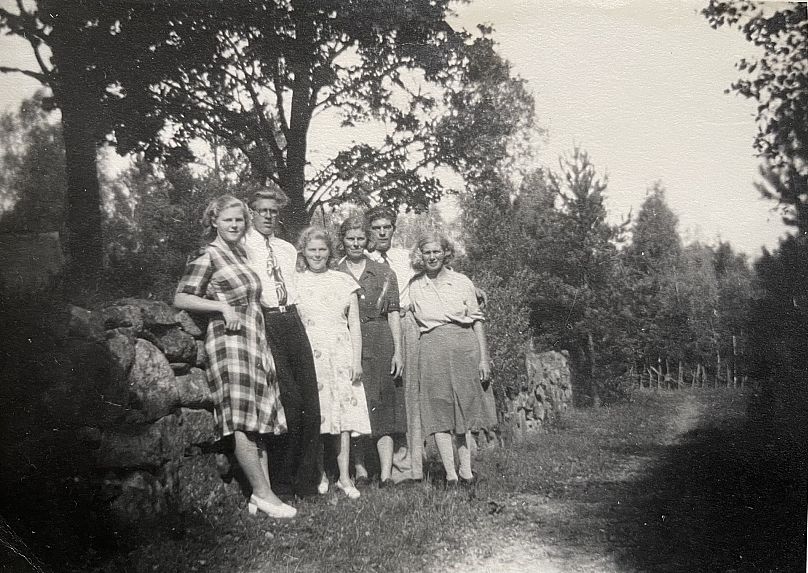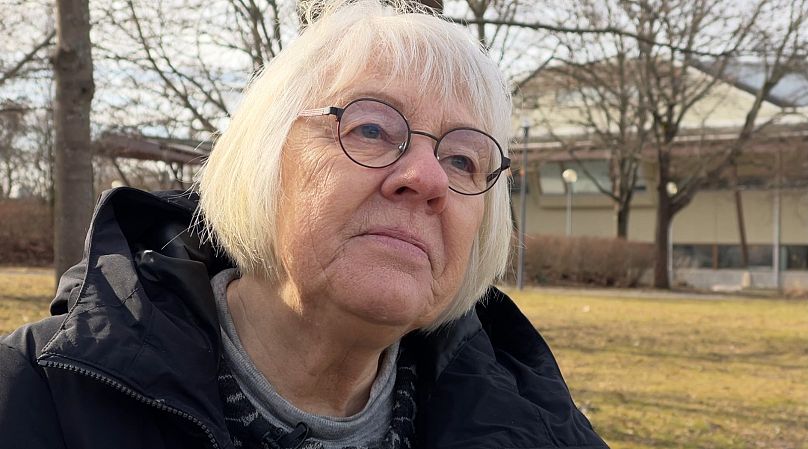Sweden set up a eugenics plan, grounded in the science of racial biology, between 1934 and 1976. “They wanted to get rid of a certain type of people: The weaker ones”.
Kjell Sundstedt’s family had never talked about the darkest moment in their history.
“It was a secret no one dared to talk about. Society was ashamed that people had been forced to be sterilised in Sweden”, says the 71-year-old filmmaker.
He had not even discussed it with his family, so when Sundstedt discovered that four of his uncles had been forcibly sterilised he was shocked.
“They were sterilised because they were poor. Their crime was poverty”, he adds.
Sweden set up a eugenics plan, grounded in the science of racial biology, between 1934 and 1976. The first country in Europe to later abolish forced sterilisation was carrying out a policy under which between 20,000 and 33,000 Swedes were forced to be sterilised.
Victims were young and mostly female, judged to be ‘feeble-minded’, ‘rebellious’ or ‘mixed race’. Swedish authorities believed they were creating a society that would be the envy of the world.
“They wanted to get rid of a certain type of people: The weaker ones”, says Sundstedt.
Although Sundstedt’s mother managed to escape to the Swedish capital and avoid being sterilised, her sister Maj-Britt wasn’t so lucky.
Their mother died when Maj-Britt was very young. As their family was poor, the child protection services from the municipality intervened and asked her and the younger siblings who still lived at home to undergo an IQ test.
“During this period they believed a lot in IQ tests, intelligence was very important for them”, says Sundstedt. These tests mainly consisted of knowledge-based questions and as Maj-Britt and her brothers were poor they couldn’t answer them because they didn’t attend school regularly.
She scored under the threshold of ‘normal intelligence’ and therefore was classified as ‘feeble minded’. As a result, she was sent to Nannylund, a mental asylum.
“She was considered to have a mental illness because she kept protesting”, recalls the filmmaker.
“Although they did IQ tests quite often, once she was inside the institution they could not say: ‘Oh, we were wrong’”, he adds.
Everyone who left the centre had to be sterilised, that was the rule, so when Maj-Britt was moved to another institution they sent her to undergo surgery.
“Her father wanted her not to be sterilised, he opposed it. But it didn’t help”, says Sundstedt.
‘It could have been me’
Maija Runcis, a professor in history at the University of Stockholm, used to work in the State archives when she noticed an area that was locked off and not accessible to the public.
Within it, there were thousands of authorisation papers for sterilisations.
The first one she read was a 13-year-old girl whose priest believed she was not concentrating in confirmation classes well enough, so they decided to sterilise her.
“When I studied the applications, and I have studied thousands of them, I thought: ‘My God, it could have been me, it could have been my neighbour, it could have been whoever’”, says the historian.
“Because maybe I was too happy or liked to paint my nails or put makeup on. That could sometimes be the reason in the application. If you didn’t fit in with society you risked being sterilised”, she adds.
This was the first crack in the beautiful picture of the Swedish welfare state, as the historian describes it.
According to the law, a person could be sterilised, even without their consent, for eugenics, social or medical reasons.
This law was implemented after years of research in eugenics and genetics conducted by the State Institute for Racial Biology.
The pioneering institute, founded in 1922, inspired the creation of a similar institute in Germany in 1927. Its role was to advise authorities on how the knowledge on genetics could be implemented in society at large.
In Sweden the funding of the insitute enjoyed broad political backing.
“All parties, except the Communists, were supporting this. It was described as a public health measure”, says Sven Widmalm, professor of the history of science at Uppsala University.
“Science was God at that time. So they supported the law and social engineering”, says Runcis. “It was the scientific way to clean the society of the ‘feeble minded’”.
The shame of being sterilised
At the time, the state-run sterilisation program was no secret. It was carried out in the light of public debate. It had “massive propaganda and little criticism” in the eyes of Swedish society, according to Widmalm.
"Herman Lundborg, director of the State Institute for Racial Biology, feared some sort of 'racial suicide' because people with bad genes procreated more than the middle class," he says.
Following a parliamentary inquiry in the 1990s,the government offered compensation to victims of forced sterilisation. They set up a financial compensation plan of SEK 175,000 (about EUR 15,000) for each victim.
A total of 3000 compensation cases were awarded, a very low number compared to the number of people suspected to have been sterilised by force.
While reviewing the applications, Runcis was astounded when she found her own mother was sterilised.
“I found her in the files, I didn’t know that. I told her she could get compensation for it but she answered: “It's such a shame, I will never ask for it”, said the professor.
Sundstedt's uncle, who was also sterilised along with Maj-Britt, did not ask for compensation either. “He felt stigmatised. He didn’t even want to date girls, he thought they knew about his sterilisation”, says the filmmaker.
Two of his uncles’ acquaintances, who were also sterilised, killed themselves after understanding what had been done to them.
“Choosing who will live and who will disappear is a terrible thought. There were people who called themselves humanists and thought they were doing a good thing, which is even more terrifying”, he adds.
This article was produced with the support of Journalismfund Europe.


















